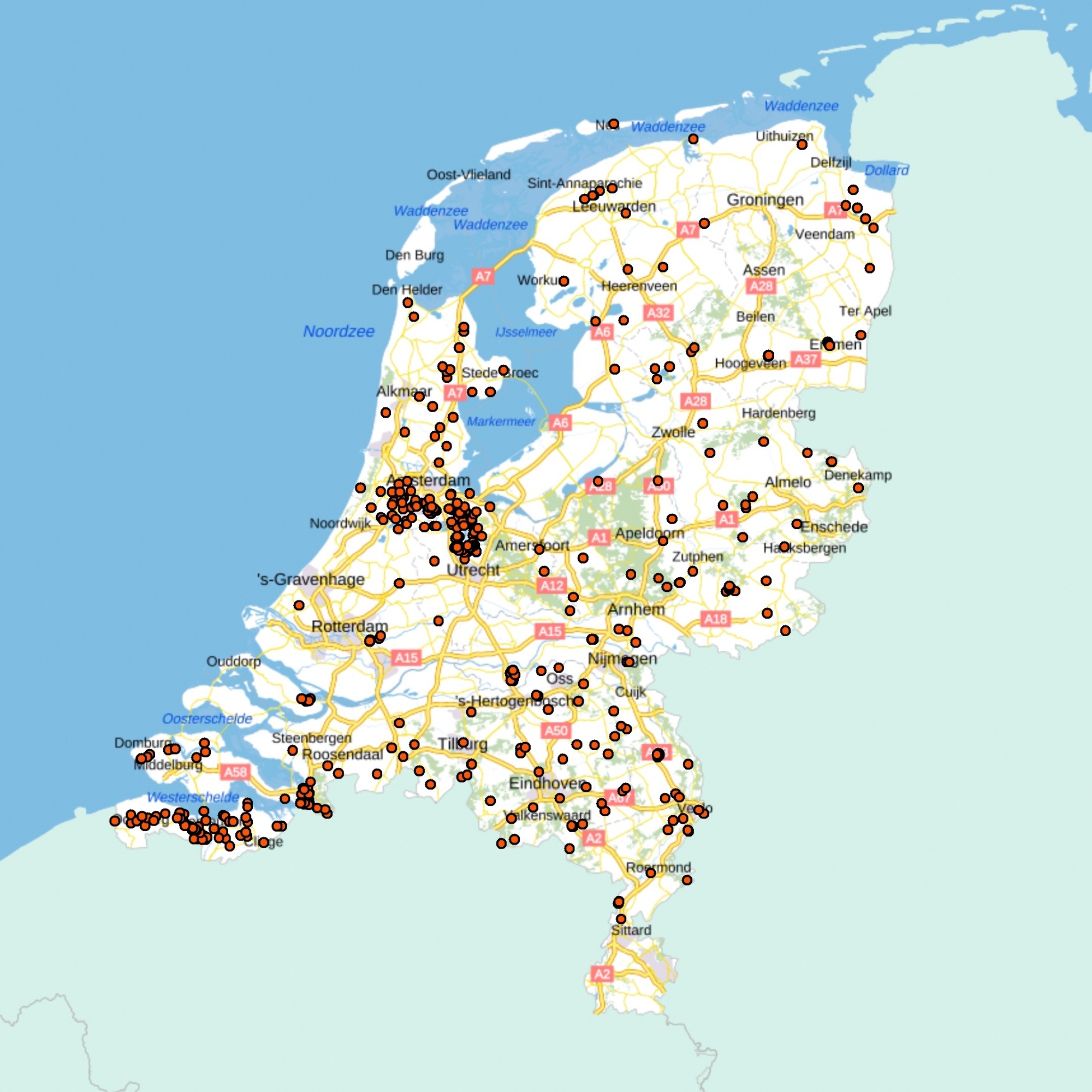Among the data you can request from DINOloket are the geochemical analyses of geological deposits. In the past few months, these data have been expanded with more than 5,000 geochemical analyses.

The Geological Survey of the Netherlands, part of TNO, has added more than 5,000 geochemical sediment analyses (or soil analyses) to the DINOloket database. The oldest analyses entered into DINOloket date back to the mid-1990s, and the deepest samples come from approximately 500 metres below the surface.
These analyses come primarily from dozens of TNO projects. But some of them, for example, come from doctoral or graduate research, or research for companies that produce drinking water. Geochemical sediment research is important for drinking water companies, as it allows them to predict the quality of the raw water that is the source of our drinking water.
Data available in DINOloket
The recently added chemical analyses can be found on the map in the section ‘Subsurface research’, and the subsection ‘Geological borehole research’. Of course, chemical analyses of groundwater are also available on the site, in the section ‘Groundwater monitoring’ and subsection ‘Groundwater composition’.
The geochemical sediment analyses always involve the study of metals, lime, organic matter and sulphur. These can be used, for example, to deduce the natural composition of sediment, including trace elements like lead, nickel and arsenic. It is also possible to derive the subsurface’s capacity to buffer the pollutants that flow in. In this way, the amount of pyrite (FeS2) in the subsurface can be determined. In turn, information about pyrite is important in predicting the behaviour of nitrate in groundwater. The pyrite converts nitrate into harmless nitrogen gas. However, this can release arsenic, nickel and sulphate, which are also undesirable substances. The geochemical sediment analyses do not include things like organic micro-pollutants.
More improvements and opportunities
In addition to this substantial expansion, approximately 1,500 additional geochemical sediment analyses have been improved. Missing data have been added and depth data have been improved, among other things.
Some sediment analyses could not be included in the DINO database. This is because the XY coordinates could not be traced, for example because only the name of the quarry was known, or because it concerns a mixed sample. These data cannot be included in the DINO database, since soil analyses there must be linked to individual borehole drillings. However, such analyses are still valuable, because they allow a clear picture of the geologic deposits involved. These analyses are now also easily accessible and can be made available upon request.
Please contact us if you have any questions about geochemical sediment analyses.